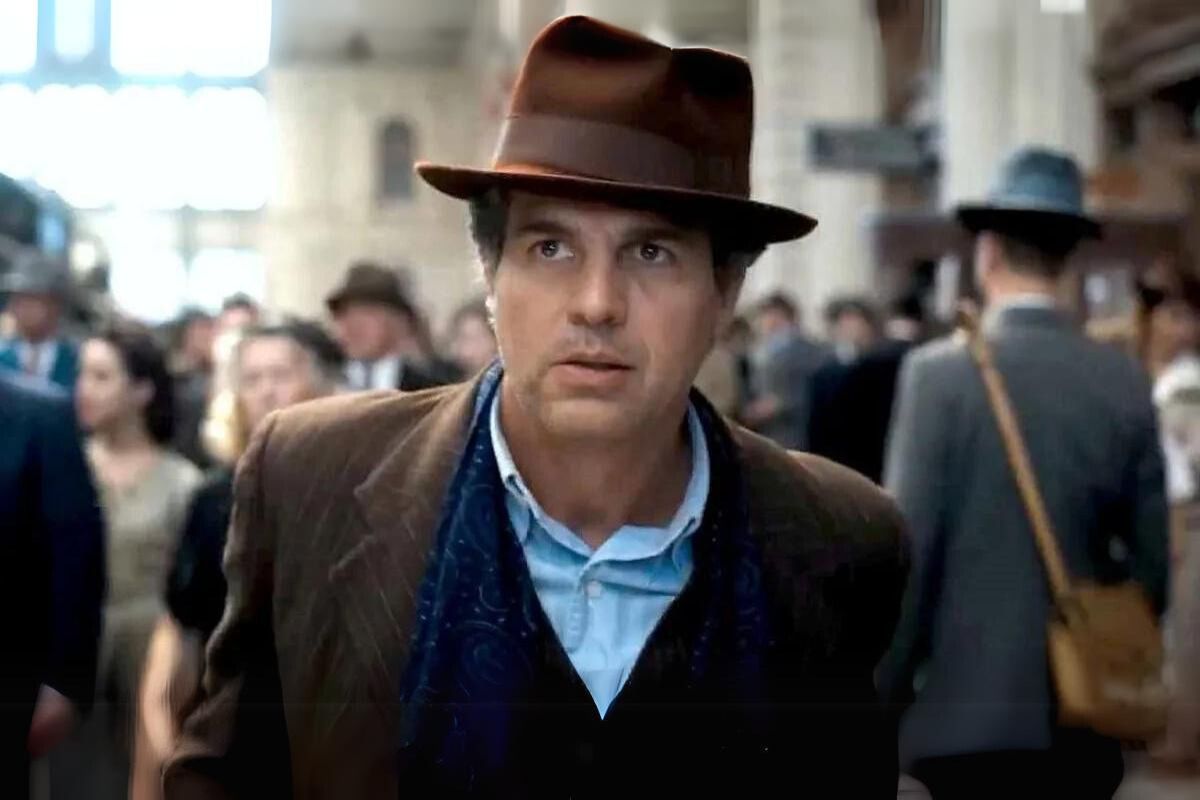All The Light We Cannot See on Netflix is historical fiction, not a true story. Inspired by a lost phone connection, the adaptation introduces changes for a more hopeful ending and amplified relationships.
The gripping wartime saga, currently dominating the Netflix charts in the U.S., is a masterful adaptation directed by Shawn Levy. Based on Anthony Doerr’s Pulitzer Prize-winning novel, the series immerses viewers in the tumultuous backdrop of World War II, leaving them questioning the veracity of the events that unfold for characters like Marie-Laure and her father.
A Diamond, Nazis, and a Blind Girl’s Journey
Marie-Laure, portrayed by the talented Aria Mia Loberti, takes center stage as a young blind French girl escaping occupied Paris with her father, Daniel LeBlanc (played by Mark Ruffalo). Their mission: safeguarding a legendary diamond from falling into the clutches of the Nazis.
The narrative weaves a compelling tale as the father-daughter duo seeks refuge in Saint-Malo, where Uncle Etienne (Hugh Laurie) becomes a crucial player in transmitting covert radio broadcasts as part of the resistance. Simultaneously, Werner Pfennig (Louis Hofmann), a German orphan and radio technician, is enlisted by the Nazis to track down Marie-Laure and illegal broadcasts. The intersection of their paths sparks a unique connection, capturing the essence of a lifetime’s love in a fleeting moment.
Separating Fact from Fiction
Is All The Light We Cannot See based on a true story? The resounding answer is no. This limited series, an adaptation of Doerr’s book, is a work of historical fiction set against the backdrop of World War II. While Marie-Laure, Werner, and other characters are fictional, the events draw inspiration from the 1944 siege and battle for control of Saint-Malo in Brittany, France.
Anthony Doerr emphasized the importance of historical accuracy, ensuring that every detail of Saint-Malo was meticulously portrayed to convey the realism of the project.
The Genesis of the Plot
What inspired the plot for All The Light We Cannot See? Anthony Doerr’s creative spark ignited during an ordinary subway ride in New York City. Observing a man distressed by a lost cell phone connection in a tunnel, Doerr realized the miracle of modern communication.
The radio, a central element in the story, serves as both a force for good and evil. It becomes a tool for indoctrination in Werner’s life and a means of liberation and education for Marie. The author delves into the impact of nationalism on young orphans and the transformative role of radio in Marie’s life.
Changes and Choices in Adaptation
While retaining the essence of the novel, director Shawn Levy introduces subtle changes in the Netflix series. The decision to infuse hope into the conclusion, deviating from the book’s traumatic ending, reflects a conscious choice to provide a more uplifting experience for viewers.
Additionally, Levy explores amplified relationships in the series, such as the dynamic between Etienne and Marie and Etienne and Werner. These connections, crafted by writer Steven Knight, delve into the shared struggles and haunted pasts of characters from different generations, played by the powerhouse duo of Hugh Laurie and Louis Hofmann.
Unravel the layers of historical fiction and witness the unique choices that bring All The Light We Cannot See to life on screen.

Key Differences: Book vs. Series
New Characters
Levy introduced new characters, such as Nazi soldiers Captain Mueller and Schmidt, to amplify the tension and hatred prevalent during World War II. Their threat to Marie-Laure’s life underscores the encroaching danger, a creative choice that Doerr found effective.
Alternate Backstories
To streamline the plot, character backstories are condensed in the series. Marie-Laure and her father’s journey to safety and Werner’s initiation into the Nazi regime are presented more succinctly, weaving seamlessly into the episodes.
Madame Manec and Etienne
Significant alterations were made to the relationship between Madame Manec and Etienne, presenting them as closer than in the novel. The series takes creative liberties with their fates, providing a dramatic twist to their storylines.
The Ending
The most significant departure comes in the ending. Unlike the novel, where Werner kills Reinhold, the series takes a different turn. Marie-Laure takes charge, ending the threat herself. The series diverges from the book’s conclusion, hinting at a potential separation between Marie-Laure and Werner after the liberation of Saint-Malo.

